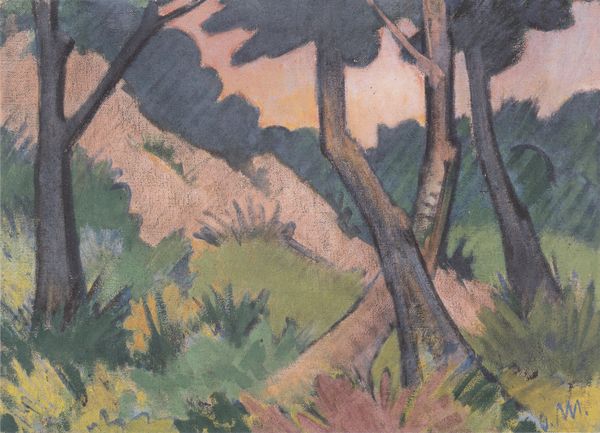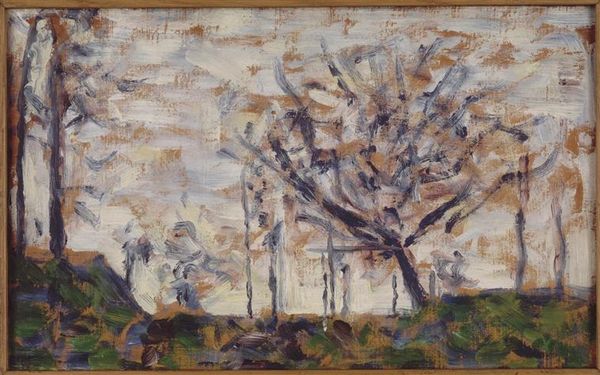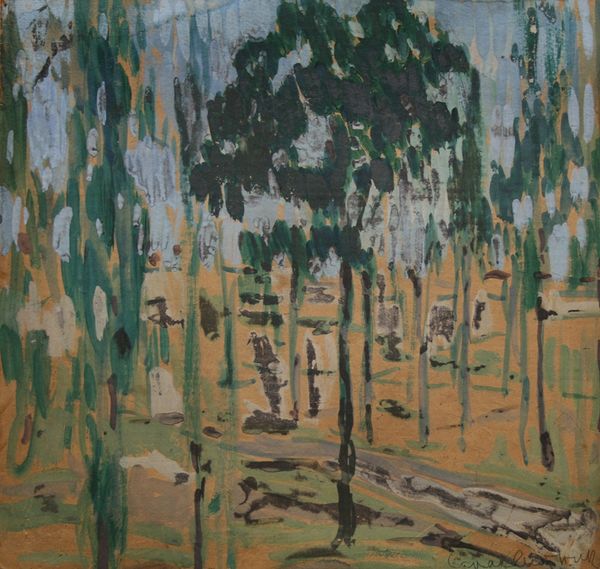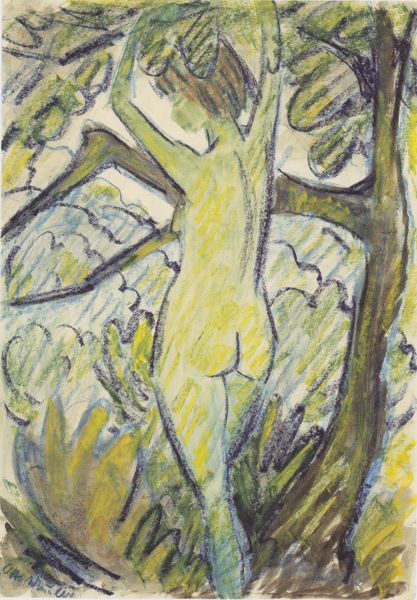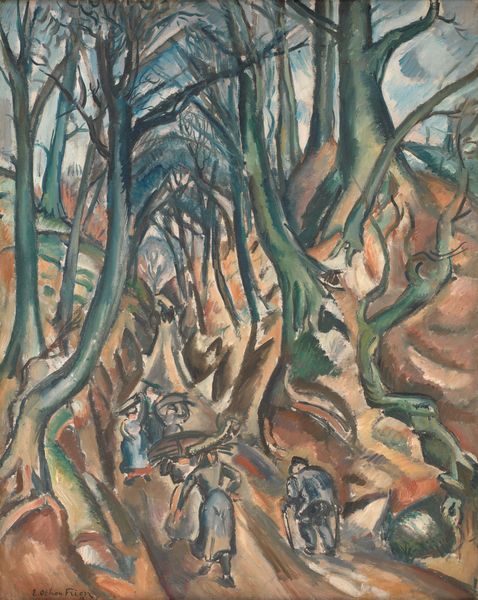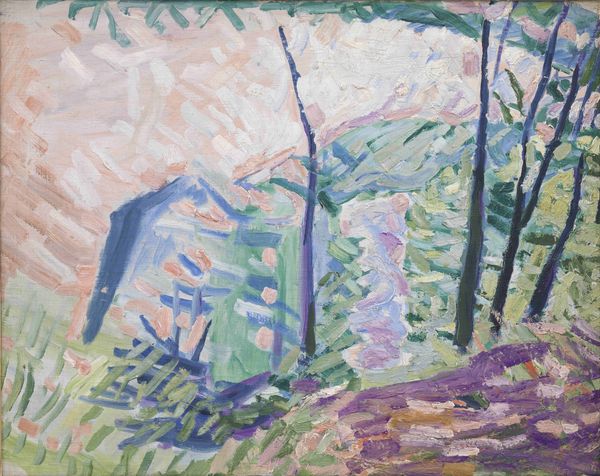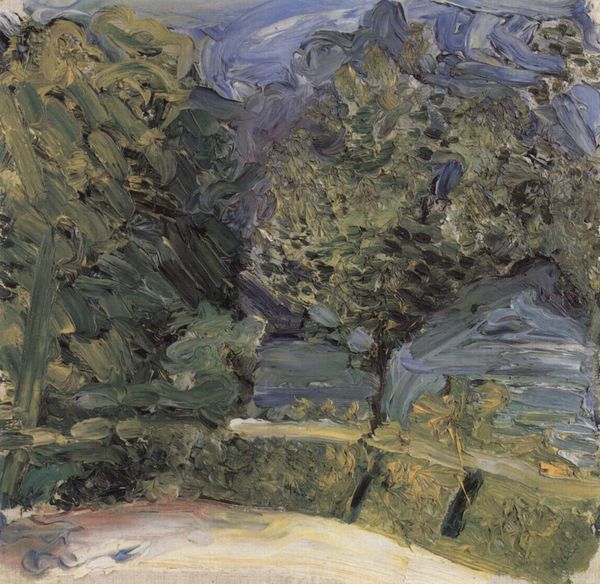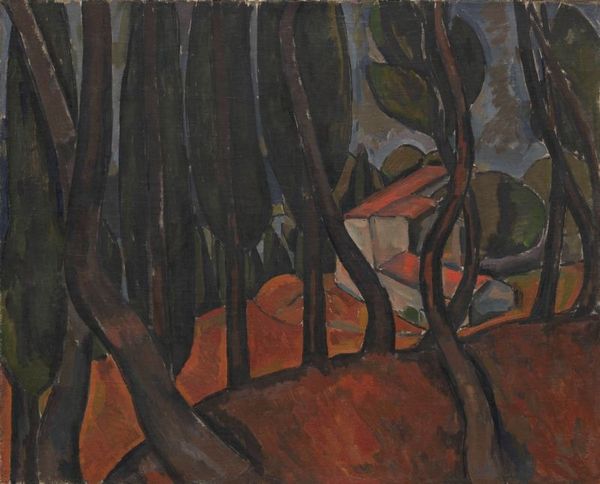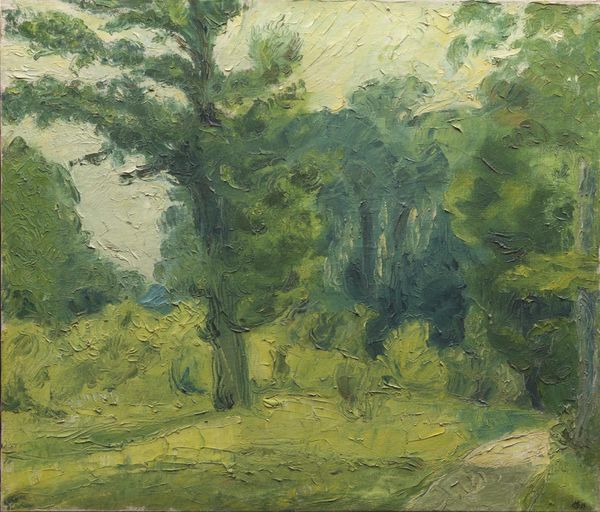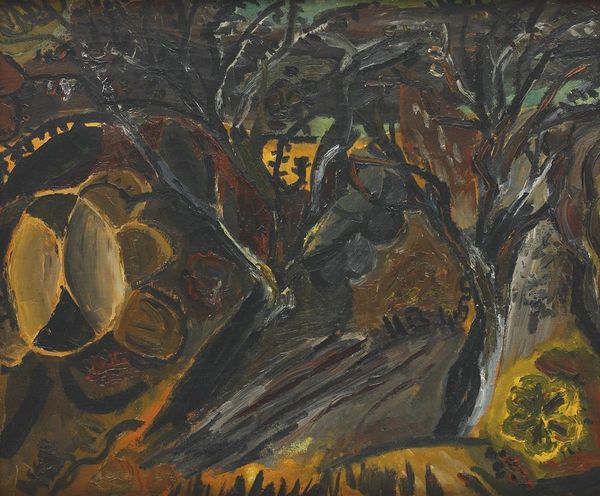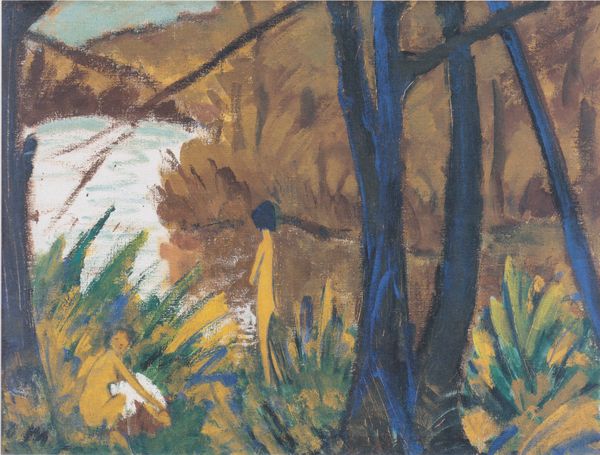
painting, oil-paint
#
painting
#
oil-paint
#
landscape
#
german-expressionism
#
figuration
#
oil painting
#
expressionism
Dimensions: 110 x 91 cm
Copyright: Public domain
Curator: This is Otto Mueller's "Mädchen Am See," or "Girl by the Lake," painted around 1916. It's an oil on canvas, part of a private collection. What’s your immediate take? Editor: There's a somber stillness to it, a quiet that feels almost suffocating. The colors are muted, earthy... it creates this very internalized, almost melancholic mood. Curator: Interesting, especially given its place within German Expressionism, where intense emotion is frequently displayed. But looking at the facture of the painting, there's this incredible build-up of material. Notice the layering of the paint. It wasn't about smooth illusionism. You see every touch, every gesture of the artist. Editor: Yes, and situated in the period just prior to and during the first World War, there's a real tension and apprehension layered into it. The solitary figure nestled almost anonymously within the landscape. Where does she exist within such an unfolding horror? There is such profound loneliness there. Curator: Absolutely. And to consider the conditions under which this work was produced… the sourcing of the pigments, the quality of the canvas, the available light in his studio… those all played crucial roles in the aesthetic outcome. It's all about the process! It's a challenge to that high-art romanticism. Editor: While process and technique can’t be ignored, the "what" matters just as much. Art isn't created in a vacuum. We can trace the line from anxieties and dislocation brought about by industrialization, to how the role of women in society and its perception might affect their placement within even so small a snapshot of visual life, a woman by a lake. Curator: But the physicality! Think about the haptic engagement Mueller had with the materials, how the tools shaped the outcome. The thickness or thinness of the paint changes the perception. The rough, raw materiality of the paint matters so much. Editor: That physicality only reinforces that context, right? We understand how those raw and rough brushstrokes symbolize a world where foundations, personal and structural, are coming undone. It brings her inward life, her struggles, and anxieties, out into the world! Curator: Well, it certainly gives us much to think about. Editor: It does, indeed. Another chance to pause, look deeper, and consider art as a crucial part of social understanding.
Comments
No comments
Be the first to comment and join the conversation on the ultimate creative platform.

